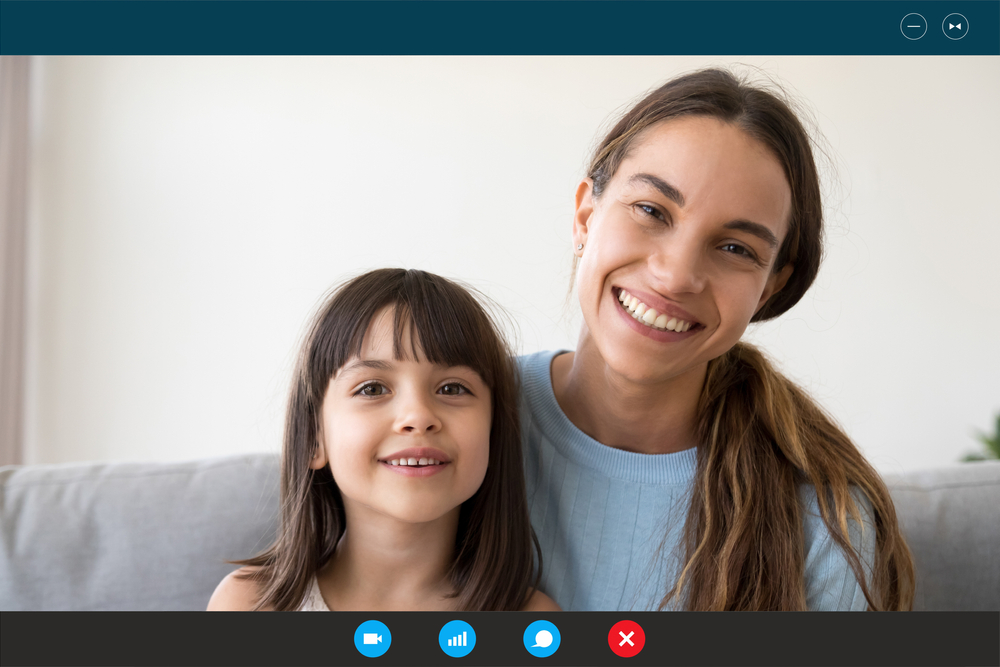
04 May Teletherapy: A Not So Traditional Form of Therapy
Teletherapy has been the topic of conversation as a result of the recent pandemic. In fact, teletherapy may be considered an underutilized tool that recently rediscovered its value. You may have many questions wondering, “What is the benefit of teletherapy?” “How can this replace an in-person session?”Or better yet, “How willing and engaged will my child be?”
We will not be talking about replacing in-office sessions as we know there are many invaluable benefits to this. Instead, we will be discussing a not so traditional form of therapy and the benefits of using it during a time where safety and social distancing are at the utmost importance. For more information on tips for social distancing, this NSFS blog offers great suggestions. Additionally, teletherapy may even be a preferred method for future therapy sessions and an option to use during inclement weather and times of illness.
A Little Background on Teletherapy:
Teletherapy has been around for many years, however, most of us have not even considered it an option. Even though teletherapy is a not-so-traditional form of therapy, it has been known to offer valuable benefits. Research in 2017 has indicated that telemental health, or teletherapy, offers successful and functional interventions to clients with varying mental illnesses. It was also found that using telemental health allows clinicians to further access creative approaches and strategies when working with clients.
This means that teletherapy can be a beneficial and effective option when seeking therapeutic services. We can see that teletherapy was valued well before a time where virtual interactions were considered the new “normal.” It may hard to imagine how similar teletherapy can be to an in-office session. However, clinicians are still using the same tools, knowledge, and approaches.
Wait a Second, You Mean No Office-Visit Wait?
A benefit of teletherapy is that it can be done in the comfort of your own home. It can literally be done anywhere you feel comfortable! Keeping privacy in mind is important which means utilizing a space where you are uninterrupted and feel safe. Just imagine, no concerns of hitting traffic, finding a parking spot, facing inclement weather, and even better, no office-visit wait times! The benefit of teletherapy is that flexibility is a perk that allows you to schedule your session in between your regular activities.
Moreover, many of us know that anxiety can occur with the thought of entering your therapist’s office. Therapy is considered a private part of your life. Above all, it can be a very intimate and personal aspect of your life where you feel the most vulnerable. When going into a therapy office, you may wonder, “How long will I have to wait?” “Who will I run into?” “What if I see my neighbors? What will I say to them next time?” With teletherapy, anxiety regarding driving to, entering, and leaving the office is completely eliminated. You have the opportunity to solely prepare for and focus on your session.
Bigger Question, How Will My Child Respond to Teletherapy?
An advantage of living in a technologically-evolving world is that there are endless interactive tools and approaches to delivering therapeutic services. Clinicians have already been using online tools and regularly incorporating them into your child’s sessions. Let’s just say, a therapist’s creativity juices are ever-flowing!
The only difference with teletherapy is that therapist and your child are behind their own screens. The overall structure of therapy remains the same. Therapists are still diligently preparing for their sessions while keeping your child’s goals in mind. There are hundreds of online books and games that clinicians access to continue to deliver the same quality service when seeing clients in an office setting.
Using teletherapy supports high-tech approaches that our society has been gradually shifting towards.
Meanwhile, as we continue to grow in a technologically-advancing world, children also find themselves moving in this same direction. We have seen classes, school assignments, and academic grades delivered online. Likewise, the same can include supports for emotional health. In fact, this not-so-traditional form of therapy comes with another benefit. It provides the opportunity to help instill independence in children allowing them the opportunity to take ownership of their therapeutic needs. Supporting kids in using technology to meet the needs of their emotional health promotes independence. It teaches them to access resources to mental health throughout their development and beyond.
How to Prepare Your Child for a Teletherapy Session:
- Identify a designated space for your child’s session. Work with your child on selecting a space where they feel comfortable and can be fully present. The work they do in session is still the same. The only difference is the setting.
- Discuss expectations. Treat the session like you would as if you were in the office. It’s important to discuss with your child that this is still their time and space to work on their goals.
- Support the Structure. Even though sessions are outside of the office does not mean that the structure goes out of the window. As with any therapy sessions, clinicians are establishing clear expectations and boundaries for therapy. This is no different than an in-office session. Yes, kids may be tempted to leave the room, which is seen both virtually and in person. Working with your therapist is important in setting the structure of the session.
In conclusion, it’s important to recognize the significant benefits teletherapy offers.
This may turn into a preferred method of treatment for some individuals. This not-so-traditional form of therapy can be an option during inclement weather, or when we are feeling under the weather. As we know, in-person sessions provide its own invaluable benefits, however, teletherapy allows us the opportunity to challenge our perceived notions on how traditional therapy “should” look.

Jeanine is a Licensed Professional Counselor who earned her Master’s Degree in Rehabilitation Counseling from Northeastern Illinois University. She also earned her Bachelor’s Degree in Applied Psychology from the University of Illinois at Chicago. Jeanine has been working with children, teens, young adults, adults, and their families in a variety of settings, such as private practice, therapeutic day schools, and residential settings since 2015.



Sorry, the comment form is closed at this time.